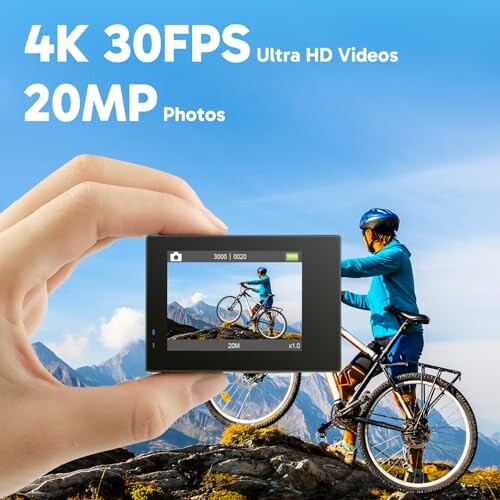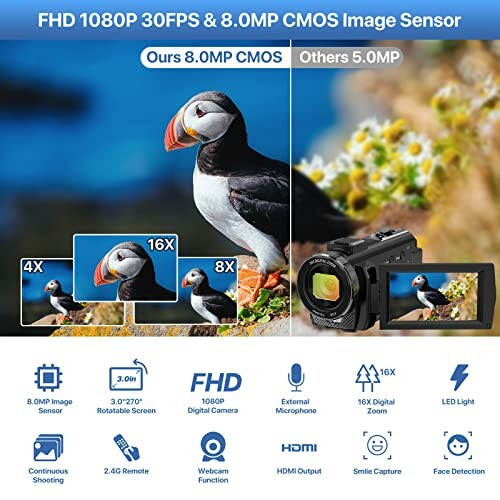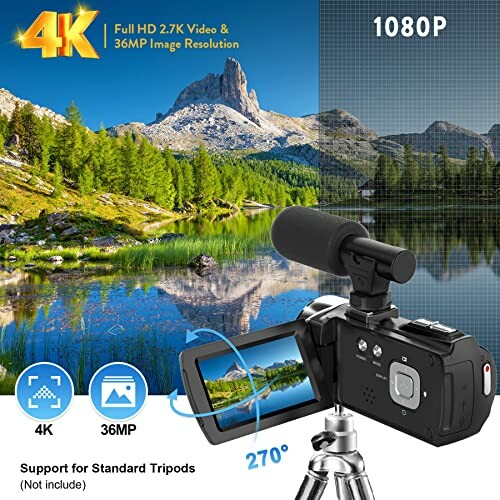
A Beginner's Guide to Lens Choices for DSLR Cameras
- Understand the different types of DSLR camera lenses.
- Choose the right lens based on your photography needs.
- Explore the benefits of prime versus zoom lenses.
- Know the important specifications to look for in a lens.
Choosing the right lens for your DSLR camera can significantly impact your photography experience. With so many options available, beginners often feel overwhelmed. In this guide, we’ll discuss the various types of lenses available, help you identify what you need based on your photography style, and give you the confidence to make the right choice.
Types of DSLR Camera Lenses
| Lens Type | Description | Best For |
|---|---|---|
| Standard Lens | Typically around 50mm focal length, designed to replicate normal human vision. | General photography, portraits. |
| Wide-Angle Lens | Offers a wider view than a standard lens, usually 24mm or lower. | Landscapes, architecture, interiors. |
| Telephoto Lens | Has a longer focal length (usually 70mm or above) for capturing distant subjects. | Wildlife, sports, portraiture. |
| Macro Lens | Designed for extreme close-up photography, usually focusing on small subjects. | Insect, flower photography. |
| Fisheye Lens | A type of ultra wide-angle lens that creates a hemispherical image. | Creative shots, action, extreme perspectives. |
Choosing the Right Lens for Your Photography Style
When it comes to selecting the right lens, consider the type of photography you are most interested in. Here are a few recommendations based on popular styles:
Landscapes
If you love capturing nature and scenery, a wide-angle lens will be your best friend. It allows you to capture expansive views and includes more of your surroundings in a frame.
Portraits
For stunning portraits, a standard lens or telephoto lens can help achieve a beautiful background blur, allowing your subject to stand out.
Wildlife
Want to shoot wildlife from a distance? A telephoto lens offers the reach needed to capture details without disturbing the animals.
Close-Ups
For those who enjoy detailed close-ups, look for a macro lens designed specifically for capturing intricate details of small subjects.
Prime vs. Zoom Lenses
| Feature | Prime Lenses | Zoom Lenses |
|---|---|---|
| Focal Length | Fixed focal length | Variable focal length |
| Image Quality | Usually higher | More versatile |
| Size & Weight | Lighter and smaller | Bulkier |
| Cost | Generally cheaper | Can be more expensive |
Important Specifications to Consider
- Aperture: A larger aperture (lower f-number) allows more light, enabling better performance in low light.
- Image Stabilization: This feature helps reduce blurriness in your shots, especially when shooting at slower shutter speeds.
- Compatibility: Ensure the lens is compatible with your specific DSLR model.
- Build Quality: Consider a weather-sealed lens for outdoor photography.
- Manufacturer's Reputation: Select brands known for quality optics.
Recommended Lenses for Beginners
As a beginner, you may want to consider these popular lenses:
AKASO Brave 4 Action Camera
Capture stunning moments with the AKASO Brave 4 in 4K video and 20MP photos. Perfect for high-energy activities.
Learn MoreALSONE Video Camera
This FHD 1080P camcorder is perfect for vlogging and creative media projects, designed for ease of use.
Learn MoreRawiemy HD 4K Video Camera
Offers stunning 4K video recording designed for professional quality at an accessible price.
Learn MoreConclusion
Choosing the right lens for your DSLR camera is essential in capturing stunning photographs. Whether you prefer wide-angle shots, detailed macros, or the versatility of a zoom lens, understanding the types and their best applications will help you select the perfect lens for your needs. Keep in mind the important specifications, and don't hesitate to experiment with different lenses to find what suits your photography style best.
Tips for Beginners
- Start with a standard lens to get a feel for photography.
- Experiment with a wide-angle lens for landscapes.
- Consider renting lenses before making a purchase to see what you prefer.
- Focus on learning composition and lighting with the lens you have.
- Check reviews and comparisons of lenses to inform your decisions.


